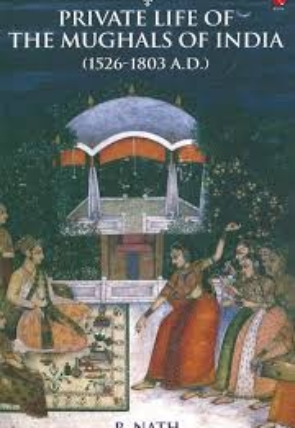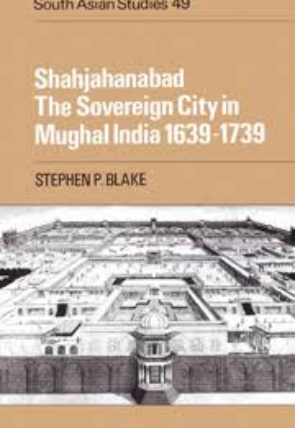Showing all 2 results

PRIVATE LIFE OF THE MUGHALS OF INDIA 2021 EDITION FREE BOOK PDF

PRIVATE LIFE OF THE MUGHALS OF INDIA 2021 EDITION FREE BOOK PDF
DESCRIPTION OF THIS BOOK :-
The opulent, sometimes scandalous, private lives of the Mughals of India is brought to life in this book. The text covers various aspects of their lifestyles, such as their food and drinks; clothes and ornaments; perfumes and incense; addictions and intoxicants; amusements and pastimes; rituals of circumcision; marriage and harem life. This well-written book with colour illustrations and photographs will be a delight to the lay reader as well as the serious scholar.
Titled as it is, the book deals with the little known, but much scandalized, private life of the Mughals who ruled from 1526, practically to 1803 when the British captured Delhi and Agra, their nerve-centres, from them. This included the period of the reign of three great Mughals, viz. Akbar (1556-1605), Jahangir (1505-27) and Shah Jehan (1628-58), of little more than a century.
They possessed not only fabulous wealth, but also the vision to found a culture-state, in the real sense of the term. Planting it in the soil as naturally as a banyan tree, they institutionalized their life, as much as their government. The former, almost completely shrouded in mystery, offers one of the most interesting aspects of medieval Indian history and culture.
Unfortunately, the official record of their day to day living which was scrupulously maintained has been lost to us.
It has been generally believed that the contemporary Persian chroniclers, living under the court patronage as they did, have blacked out this aspect of their history. Consequently, the modern historians, who have ventured to write on this subject, i. e. Mughal harem life, have almost entirely depended and drew on accounts of foreign travellers. These European travellers visited the Mughal empire contemporarily and some of them were received by the Great Mughals. But they had limitations of language, culture and accessibility to correct information. They viewed the things from the point of view of European civilization and were easily tempted to misinterpret, exaggerate and scandalize. Their narratives on Mughal life have, this, come up to be a strange mixture of a tiny fact with a mountain of fiction. Our historians who, unfortunately relied on their travelogues, have also erred in a large measure and have tremendously contributed to the misunderstanding and misrepresentation of the Mughal lifestyle. It has been unduly romanticized.
Truly, the Persian chroniclers were either prevented from knowing what happened within the four walls of the Mughal harem owing to strict protocol and Purdah, or even when they had access to this knowledge, they did not have the courage to write on this sensitive subject. The Mughal life, consequently, remained a closely guarded secret.
However, the human nature being what it is, these contemporary intellectuals’ sense of wonder led them to leave clever references to their private life in a word or two, casually, in historical narratives, and one has just to read between the lines. A lifetime’s rapport with these sources is needed to unravel these mysteries and, towards the end of it, one is simply amazed to see that there is probably nothing which was not known and which has not been recorded.
Thus, for example, when the historian Badaoni stated, on the eve of Akbar’s marriage with the princess of Jaisalmer, that she ‘obtained eternal glory by entering the female apartments’, he artfully recorded that the Mughals did not practice divorce, or separation even by death, and they married for ‘eternity’, which is how the institution of Sohagpura (The House of Eternal matrimony) came into being. One has just to live up with them to be able to write an authentic history on this abstract subject.
Thus does it cover such aspects of their living as food and drinks; clothes and ornaments; perfumes and incenses; addictions and intoxicants; amusement and pastimes; floor-coverings, furniture and lighting; and, of course, their sex life to which a few chapter have been devoted. How the Mughal king managed to keep a few hundred young and beautiful women attached to his bed is as enlightening a study as it is interesting.
Though based on research, it is written without its jargon, is a simple, readable form, for the general reader.
Only registered users can download this book.
Please Login/Register first.

SHAHJAHANABAD THE SOVEREIGN CITY IN MUGHAL INDIA 1991 FREE PDF BOOK

SHAHJAHANABAD : THE SOVEREIGN CITY IN MUGHAL INDIA
DESCRIPTION OF THIS BOOK :-
From 1400 to 1750, Asian capital cities were often ruled in such a way that they became symbols of the power and influence their emperors extended over their states at large. These ‘sovereign cities’ became the empire in miniature. Shahjahanabad is the first study of a pre-modern Indian city (Old Delhi) as a sovereign city. Stephen Blake explores the way in which the emperors’ and nobles’ palaces and mansions dominated the landscape; how cultural life revolved around that of the emperors and their families; and how the households of the great men also dominated the urban economy and controlled a large percentage of state revenue. This study thus illuminates how Asian capitals were not the great amorphous agglomerations described by Marx and Weber. Instead they were urban communities with their own distinctive style and character, dependent on a particular kind of state organization.
Old Delhi or Purani Dilli is an area part of the greater city of Delhi, India. It was founded as a walled city named Shahjahanabad in 1639, when Shah Jahan (the Mughal emperor at the time) decided to shift the Mughal capital from Agra. The construction of the city was completed in 1648, and it remained the capital of the Mughal Empire until its fall in 1857, when the British Raj took over as paramount power in India. It was once filled with mansions of nobles and members of the royal court, along with elegant mosques and gardens.
It serves as the symbolic heart of metropolitan Delhi and is known for its bazaars, street food, shopping locations and its Islamic architecture; Jama Masjid being the most notable example, standing tall in the midst of the old city. Only a few havelis are left and maintained.
The site of Shahjahanabad is north of earlier settlements of Delhi. Its southern part overlaps some of the area that was settled by the Tughlaqs in the 14th century when it was the seat of Delhi Sultanate. The sultanates ruled from Delhi between 1206 and 1526, when the last was replaced by the Mughal dynasty. The five dynasties were the Mamluk dynasty (1206–90), the Khalji dynasty (1290–1320), the Tughlaq dynasty (1320–1414), the Sayyid dynasty (1414–51), Lodi dynasty (1451–1526) and the Suri dynasty (1540-1556)
Delhi remained an important place for the Mughals, who built palaces and forts. Most importantly, Shah Jahan had the walled city built from 1638 to 1649, containing the Lal Qila and the Chandni Chowk. Delhi was one of the original twelve subahs (imperial Mughal provinces), renamed Shahjahanabad in 1648, bordering Awadh, Agra, Ajmer, Multan and Lahore subahs. Daryaganj had the original cantonment of Delhi, after 1803, where a native regiment of Delhi garrison was stationed, which was later shifted to Ridge area. East of Daryaganj was Raj ghat Gate of the walled city, opening at Raj Ghat on Yamuna River. The first wholesale market of Old Delhi opened as the hardware market in Chawri Bazaar in 1840, the next wholesale market was that of dry fruits, spices and herbs at Khari Baoli, opening in 1850. The Phool Mandi (Flower Market) of Daryaganj was established in 1869, and even today, despite serving a small geographical area, it is of great importance due to dense population.
After the fall of the Mughal Empire post 1857 revolt, the British Raj shifted the capital of British controlled territories in India to a less volatile city, Calcutta in Bengal, where it remained until 1911. After the announcement of the change, the British developed Lutyens’ Delhi (in modern New Delhi) just south-west of Shahjahanabad.
At this point, the older city started being called Old Delhi, as New Delhi became the seat of a national government. It was formally inaugurated as such in 1931.
Only registered users can download this book.
Please Login/Register first.